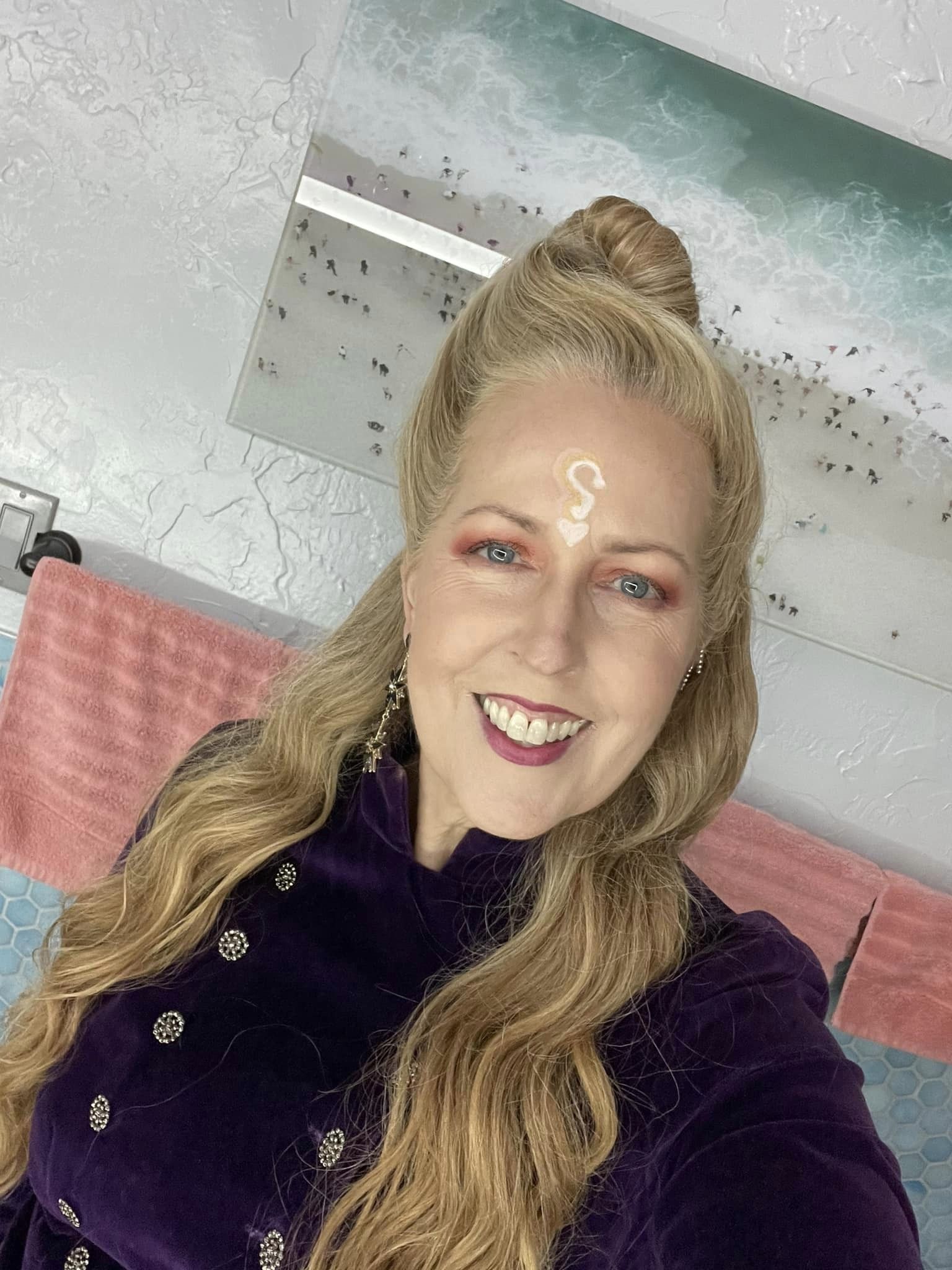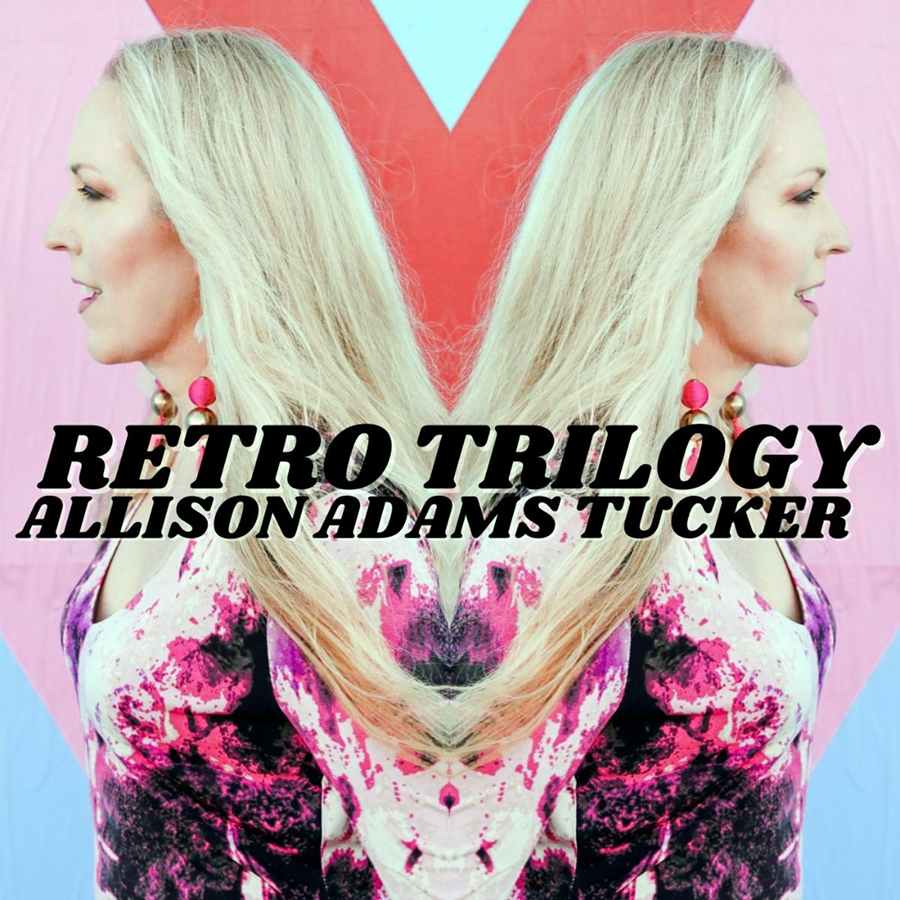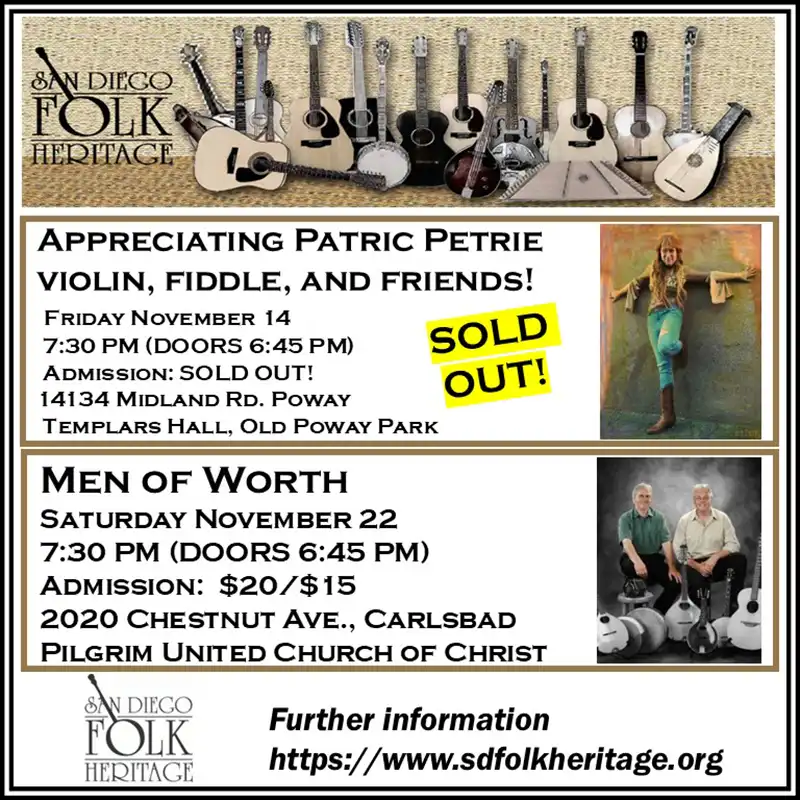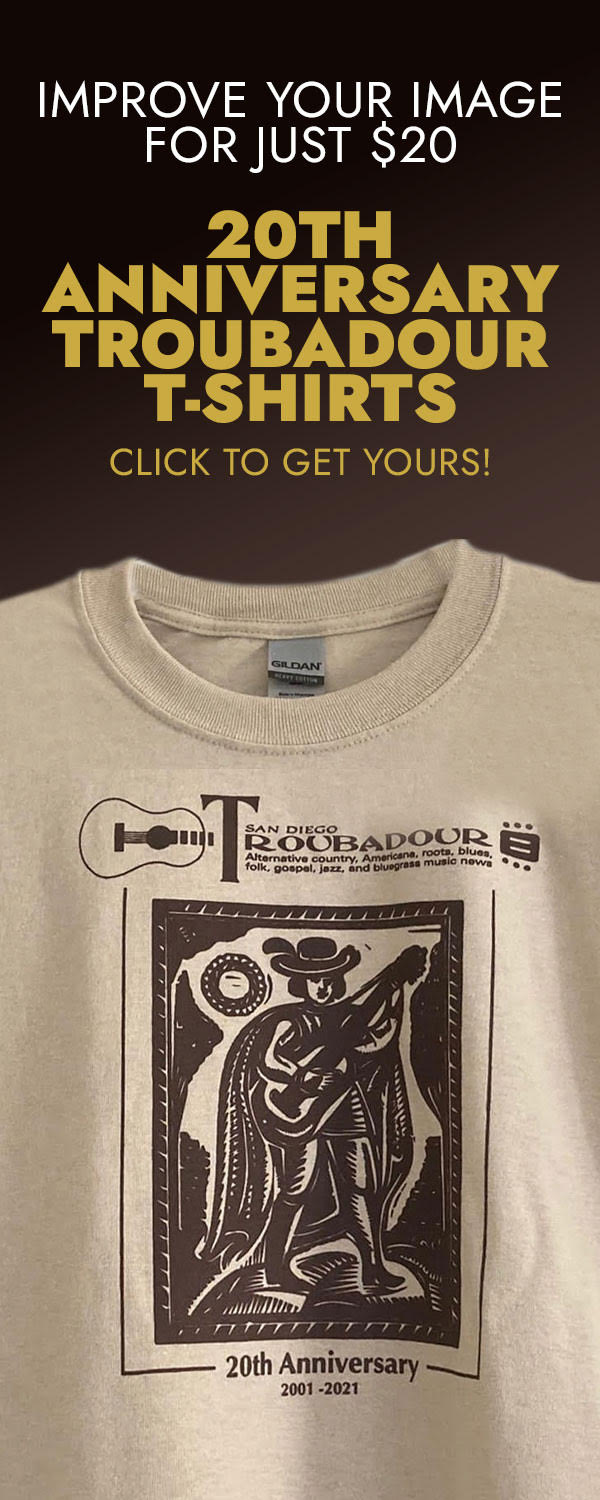Featured Stories
Allison Adams Tucker Changes Gears by Going Retro

Allison Adams Tucker
It was a desire to change things up that led to Allison Adams Tucker’s latest release. Her RETRO Trilogy album is different stylistically and conceptually, even in how it is organized and being released.
While Tucker’s previous three albums were primarily jazz standards and originals, RETRO consists—with one exception—entirely of covers of pop and rock songs. Further, the 15 tracks (18 on the digital version) are divided into three EPs of five tracks each, with each EP organized around the songs of a particular decade: The 1970s, ’80s, and ’90s to be precise.
As with many endeavors over the past few years, the release of RETRO Trilogy was delayed several times by the realities of the COVID-19 pandemic.
Tucker said in a recent interview that she first began work on this project four years ago.
“It had been three years since I had released Wanderlust, and I was going back to New York City for the annual January Jazz Congress and APAP Conference, a showcase in all different performing arts fields for their upcoming rosters.
“Part of the Jazz Congress format is they have a day where you can sit with an ‘expert’ for 10 minutes and pick their brains. You can speak with producers, managers, social media pros—I sat down with my old producer [Matt Pierson] from Wanderlust, and we started talking about ideas for a new album. I’d already done three albums under the concept of ‘Allison as the world jazz vocalist who sings in six languages,’ and I wanted to step aside from that and pay homage to the music I was raised on and the music I first sang and performed.
“My producer came up with the concept of rolling these out as three EPs—one for each decade—and have them be one album at the end. A year later, I went back to New York for the festivities again, and I recorded 18 tracks, six tracks per EP. And then the pandemic hit and everything was put on hold for a while.”

RETRO Trilogy album cover
The plan was that each themed EP would be released per month, digitally, with the full album released both digitally and on CD, once all three EPs had debuted.
“I wanted to wait until everything had kind of returned to reality. It gave me more time to prepare for this enormous rollout. What I didn’t realize is that it was going to actually be four releases—and all the work and money of four releases. We still had to do all the marketing, radio, and promo: we have also made one music video for all of these releases. And all of that within four months.
“Once you’re right in the midst of it, you have to be promoting it the week before, the week after, and the week of, which means I have one week off before the next one!”
And now that all this is done, she said she’s busy booking a tour to support the new album.
“I have 18 wonderful tracks with an amazing band, and one of them is an original that I co-wrote with Peter Sprague called ‘Wonderland.’”
Tucker said that after three albums of jazz music, tackling pop and rock again was a bit of a challenge because of their (in general) simpler construction. At the same time, she pointed out that much of the jazz canon started out life as pop songs from previous eras.
For Tucker, the Great American Songbook isn’t a select list of songs from the past but an evolving set of great music.
“If you look at the songs of the 1920s, ’30s, and ’40s [in the Great American Songbook], they were primarily from popular movies and Broadway musicals—but not all of them. Some were just songs that were popular and became part of the Great American Songbook. So why would we stop adding songs to the Great American Songbook? Obviously, we don’t.
“The Great American Songbook of 1977 was much smaller than the Great American Songbook of 2023, because songs are being added as decades continue and great music is coming out—and songs that stand the test of time is one of the definition of what defines inclusion in the Great American Songbook.
“Hundreds of years from now, listeners will listen to a Beatles song in a jazz performance much as they would ‘Bye Bye Blackbird.’”
But if a great melody is a great melody, no matter the era or style, jazz as a musical language has certain technical characteristics that differ from pop and rock, requiring adjustments to be fully brought into a jazz environment, Tucker explained.
The 1970s disc, for example, has her covering Queen, the Electric Light Orchestra and Cat Stevens, while she tackles Tears for Fears, Cyndi Lauper and Peter Gabriel on the 1980s EP. For the 1990s set, she covers Beck, Sting and Massive Attack, among others.
“The pop artists not coming from a jazz background, the form of the song, the structure of the song, the chord changes, are much more basic than an Ellington tune would be. From an arrangement standpoint, you could easily jazzify it simply by creating a more interesting, unique—let’s say, complex—groove, play with the time signature, play with the voicings of the chords. Just from that would put it in a jazz language. Once you have that skeleton in place and then singing it, I’m going to be much more inspired to change the notes, to add the bells and whistles than I would have wanted to with a basic chord progression.
“Taking an Ellington tune and creating a different arrangement, you’re taking something that has a lot of substance in the jazz language already and changing it in the same language. But when you’re taking a very basic chord progression and changing it into a more complex jazz language, I think it’s a little different.”
There was also the issue of familiarity. Tucker said that on her previous albums, the only versions of the standards she was recording were the interpretations by previous generations of jazz singers. But since she came to jazz in adulthood, the pop and rock songs on RETRO were already implanted in her mind, and she wanted to get outside that.
“I didn’t go into jazz until around 2006, and I had a lot of pop under my belt by then, so I have a difficult time combining it with jazz because I have a memory of singing along with it on the radio or with my dad.”
For that reason, Tucker said she commissioned jazz arrangements for most of the songs.
“I hired Danny Green, Josh Nelson, Kevin Hayes, Peter Sprague, and Yotam Silberstein to create arrangements. I gave them guidelines. I waited for them to create a concept, and then I was able to approach the song from a new perspective completely than if I were to simply hear the Cure sing ‘Lovesong.’
“Each of them is going to be a different scenario. For instance, for the ELO tune Josh Nelson did a very elaborate arrangement. But the Cure’s ‘Lovesong’ is a very basic chord progression, and we didn’t change it a lot, we just broke it down. That one, we went into the studio without an arrangement and arranged it in the moment.”
Once she’d decided to do an album of pop and rock covers, Tucker said she began the project by selecting the artists she wanted to cover.
“I probably chose 10 artists per decade, but I knew it was going to be six tracks per EP. So, I chose the six artists who were the most impactful on my life, and whose music had substance I could use in a jazz vein. Then with each artist, I milled through the songs to choose that one song.
“If I’d not chosen ‘Mr. Blue Sky,’ I would not have chosen ELO! I could not envision the others in a jazz vein in a flow with all of the other songs.”
She said some of her final selections surprised even her.
“I’m extremely familiar with all of Sting’s discography, but I was specifically looking for one foreign language track per EP. I wanted Spanish, French, and Portuguese, so I was looking for a French song, and Sting’s ‘La Belle Dame Sans Regrets’ came up. I loved the song, and it checked all the boxes.”
Some of the songs on RETRO have received jazz treatments before, such as Lauper’s “Time After Time,” which Miles Davis recorded in the late 1980s, or Paul Simon’s “Still Crazy After All These Years,” which Willie Nelson sang with Gil Goldstein’s jazz combo on the soundtrack of Clint Eastwood’s 2000 film Space Cowboys. Tucker said she listens to as many versions as possible ahead of time.
“Whenever I’m going to record a song, I try to know what’s been done, even down to finding obscure covers on YouYube. Then I get some time away from all that, shed it, and then go into the studio. And I try to have almost no influence, to have an empty palette, when I go into the studio.”
Tucker also said that while this is her first album exclusively devoted to covers of pop and rock songs, some of those on this recording have been part of her live repertoire, including “Time After Time.”

Pianist Danny Green, one of the collaborators on the album. Photo by Sasha Israel.
“I’d sung it a lot over the years with my jazz musicians, not with any particular arrangement, just the basic chords and we were creating in the moment. When I prepared this song, I had Danny Green do a basic lead sheet of the chords, and I did have a couple spots where I was hearing meter changes—extra bars that varied from the original recording—just to play around with the time. And that was all we did. Gave the chart to everyone for the session. That one, like ‘Lovesong,’ we all went in and just made it happen.”
If there is one constant to her career that has carried over to this album, it’s the participation of guitarist Peter Sprague. Sprague produced and played on her first album, Come with Me (2008), and played on her follow-up album, April in Paris (2012), as well as doing some post-production mastering at his SpragueLand studios. In addition, she sang a track on his 2010 album, Calling Me Home, and throughout his new tribute to Paul Simon, Spinning in Infinity.
Getting him involved on RETRO, though, involved a bit of kismet. While Tucker was in New York laying down the basic tracks, Sprague happened to also be in town for another project.
“It was not pre-planned that he would be in New York. He had a meeting with some kind of fellowship grant he had gotten. It was really meant to be! I knew I wanted him to be involved in the album, even though it was a New York band I like to have him in everything!
“He came to the studio, met with my producer, worked with me on harmonies when I was laying down the background vocals, then he and I finished up ‘Wonderland’ and laid down tracks for several of the songs that were recorded in New York, and then recorded the Prince song ‘Sometimes It Snows in April’ at SpragueLand.”
Of the one original, her own “Wonderland,” Tucker said the lyrics were derived from a poem she had written a few years earlier.
“I was invited to recite a poem at Deepak Chopra’s book release just before the 2016 election. His book was titled Home. Finding the place where we belong is an innate human urge. I named it ‘Belong’ originally. I decided I thought it would go with the ’70s songs and renamed it ‘Wonderland.’
“As a kid, being named Allison they would call me ‘Alice in Wonderland,’ which I always liked! I took the poem and put it to music while I was at the Alice in Wonderland statue in Central Park.”








